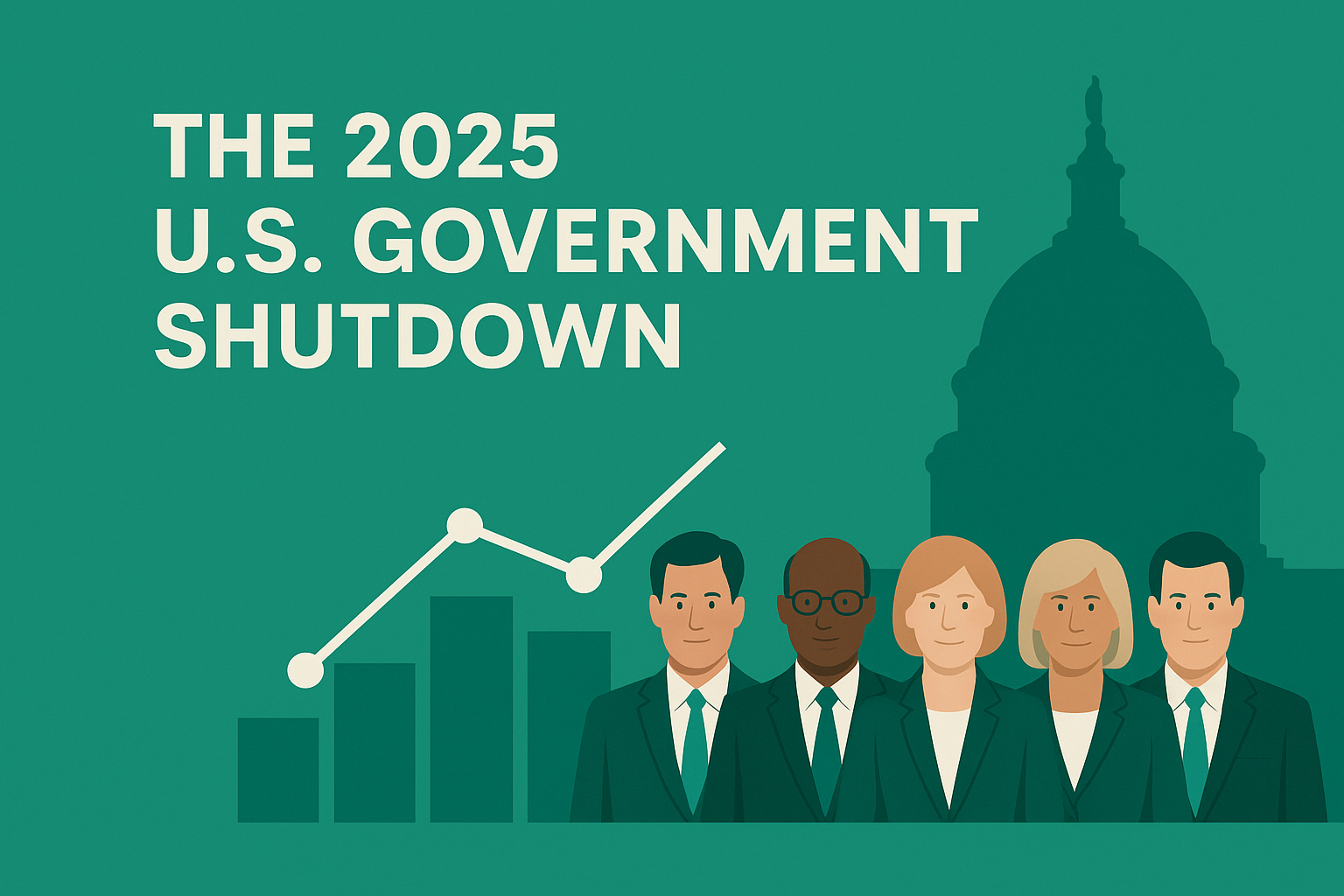Wrote By:Global Economist Date:2025/11
- I. Overview: When “Politics” Froze the Capillaries of the Economy
- II. Labor Market: From Temporary Furloughs to Structural Anxiety
- III. Income and Consumption: Confidence Collapses
- IV. Credit System: A Silent “Micro-Credit Crisis”
- V. Uneven Shock: Geography and Class
- VI. Policy Implications: Short-Term “Reopening,” Long-Term “Restoration”
- VII. Key Watchpoints for 2026
- VIII. Conclusion: When Governance Failure Breeds Credit Fragility
I. Overview: When “Politics” Froze the Capillaries of the Economy
In the autumn of 2025, the United States faced one of the longest federal government shutdowns in history — approximately 40 days.
While the cause lay in partisan conflict over the permanent extension of Affordable Care Act (ACA) tax credits, the consequences reached far beyond Washington.
The impact rippled through employment, income, credit, and consumer confidence — turning a political stalemate into an economic blockage.
This report examines how the shutdown distorted the real economy and exposed latent vulnerabilities in the U.S. credit system.
II. Labor Market: From Temporary Furloughs to Structural Anxiety
1. Expanding Furloughs and Layoffs
Roughly 650,000–750,000 federal workers were furloughed or left unpaid, and when including contractors (security, IT, maintenance, etc.), over one million incomes were disrupted.
As a result, the unemployment rate rose to 4.4% in October (+0.3 pp).
Regional economies highly dependent on federal spending — Washington D.C., Northern Virginia, and Maryland — saw output slow by 15–20%.
2. Weakening Job Demand
Suspended procurement and delayed public contracts caused a freeze in new hiring.
Private labor data show a decline of 22,000 government jobs and 7,000 retail positions in October.
This points to a structural shift: from nominal full employment to effective underemployment, as many remained technically employed but unpaid.
III. Income and Consumption: Confidence Collapses
The University of Michigan Consumer Sentiment Index plunged to 50.3 (−12 points month-on-month).
Unpaid wages and frozen public spending temporarily erased over $100 billion in disposable income, triggering a “defensive consumption” pattern — saving more and spending less.
| Sector | Primary Impact | Estimated GDP Drag (CBO) |
|---|---|---|
| Retail & Services | Declining sales, reduced activity | −0.7 ppt |
| Aviation & Tourism | FAA cut flights by 10% in 40 markets | −0.3 ppt |
| Public Contracts & Construction | Project delays, halted grants | −0.4 ppt |
Total GDP impact: −1.2 to −1.5 percentage points (annualized),
with weekly losses estimated by the CBO at $7–14 billion.
IV. Credit System: A Silent “Micro-Credit Crisis”
1. Credit Cards: Borrowing to Survive
- Credit card delinquency rate (90+ days): 3.05%
- Charge-off rate: 4.04% (Q2 2025)
- Subprime balances (FICO < 600): $233 billion, nearly 9% of total household debt
- Average APRs of 22–28% turned short-term borrowing into chronic debt.
Many low-income households used cards as de facto income replacement.
2. Mortgages: Rising Dependence on ARMs
- 25% of new mortgages are adjustable-rate (ARM).
- 60-day delinquency: 1.27% (+0.3 pp y/y).
- FHA and HUD processing delays hindered low-income borrowers from closing purchases, further widening housing inequality.
3. Auto Loans: Subprime Stress
- Subprime auto loan delinquency ≈ 16%.
- Lenders accelerated repossessions amid falling used-car prices, stripping vulnerable workers of their transport and thus reducing labor participation.
4. Student Loans: Credit Scores Under Pressure
- Delinquency (90+ days): 9.4% after repayments resumed.
- Over 3 million borrowers saw their credit scores drop; 1 million lost 150+ points.
- This has chilled credit access for younger Americans, delaying homebuying, marriage, and entrepreneurship.
V. Uneven Shock: Geography and Class
- Regional Disparities
- D.C.–Maryland–Virginia corridor: epicenter of fiscal shock.
- Sunbelt states (Texas, Florida): tourism and defense spending slowdown.
- Midwest industrial belt: supply chain interruptions and lower plant utilization.
- Socio-economic Stratification
- Prime borrowers: absorbed the shock via savings.
- Subprime borrowers: exposed to escalating debt and delinquencies.
- Younger/low-education workers: caught in a dual trap of job insecurity and credit degradation.
VI. Policy Implications: Short-Term “Reopening,” Long-Term “Restoration”
- Short-Term
- Partial recovery expected as budget execution resumes.
- However, furloughed workers’ financial scars will take months to heal.
- Medium-Term
- A rising risk of cross-default contagion across credit cards, auto, and mortgage segments.
- Local banks and credit unions face mounting loan-loss reserves and tighter liquidity.
- Long-Term
- Repeated shutdowns erode institutional credibility.
- Structural weakening of “non-market” sectors—public employment, research, and education.
- Risk premiums on U.S. Treasuries may increase, raising long-term borrowing costs.
VII. Key Watchpoints for 2026
| Focus Area | Emerging Issue | Indicator to Monitor |
|---|---|---|
| Fiscal-Political | Next funding negotiation (Jan 30 2026) | ACA credit extension, debt-limit talks |
| Labor Market | Job recovery & hiring trends | Participation rate, JOLTS ratio |
| Credit System | Containing delinquency contagion | Community bank reserves, FRB reports |
| Consumer Sector | Confidence & credit access | Sentiment index, card spending data |
VIII. Conclusion: When Governance Failure Breeds Credit Fragility
The 2025 U.S. government shutdown was not merely a budgetary impasse —
it was a case study in how political paralysis can choke the economic bloodstream.
Unpaid federal workers curtailed spending, rippling through small businesses;
credit delinquencies climbed, pushing lenders into risk-aversion;
and public confidence eroded, freezing both consumption and investment.
In short, governance failure became a credit event.
Repairing the damage will require more than reopening agencies —
it will demand restoring trust in the continuity of American institutions.
Key Sources:
Congressional Budget Office (CBO); Washington Post; Reuters; AP News; ABC News; Federal Reserve Banks of Chicago & New York; TransUnion Q2 2025 Consumer Credit Report; Equifax National Market Pulse; IMF Global Market Monitor (Oct 2025); University of Michigan Consumer Sentiment Index.

